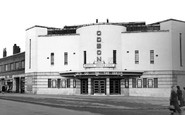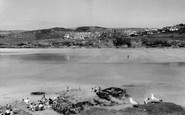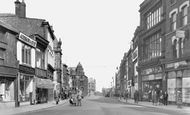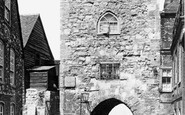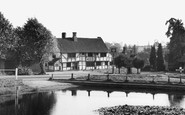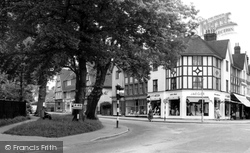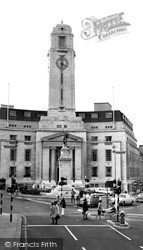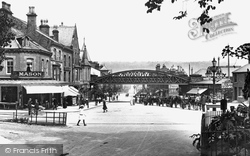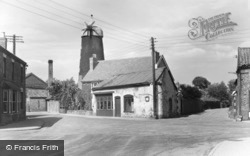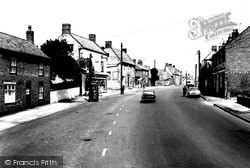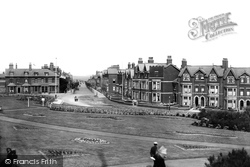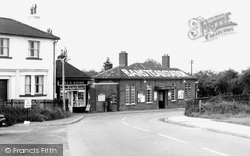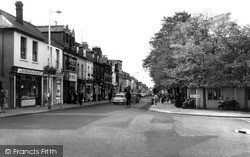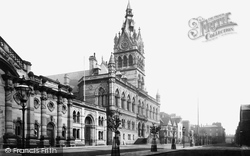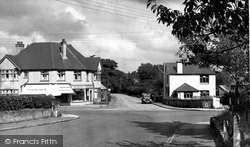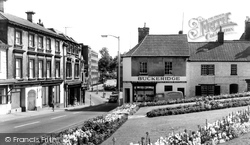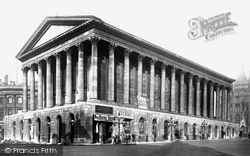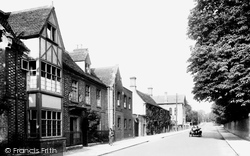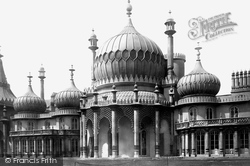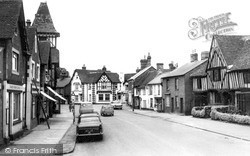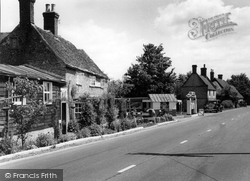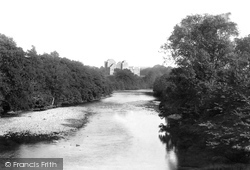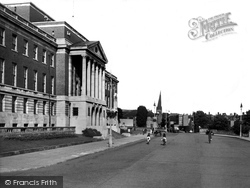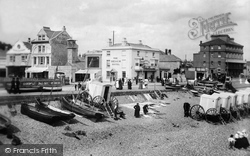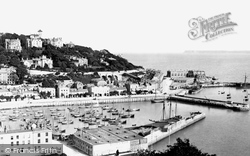Places
26 places found.
Those places high-lighted have photos. All locations may have maps, books and memories.
- Town End, Derbyshire
- Town End, Buckinghamshire
- Town's End, Somerset
- Towns End, Dorset
- Town End, Merseyside
- Town End, Cambridgeshire
- Town's End, Buckinghamshire
- West End Town, Northumberland
- Bolton Town End, Lancashire
- Kearby Town End, Yorkshire
- Town End, Cumbria (near Grange-Over-Sands)
- Town End, Cumbria (near Bowness-On-Windermere)
- Town End, Yorkshire (near Huddersfield)
- Town End, Yorkshire (near Wilberfoss)
- Town End, Cumbria (near Appleby-in-Westmorland)
- Town's End, Dorset (near Melbury Osmond)
- Town's End, Dorset (near Swanage)
- Town End, Cumbria (near Ambleside)
- Town End, Cumbria (near Lakeside)
- Town End, Cumbria (near Kirkby Lonsdale)
- Town End, Cumbria (near Ambleside)
- Town's End, Dorset (near Bere Regis)
- West-end Town, South Glamorgan
- Townend, Derbyshire
- Townend, Strathclyde (near Dumbarton)
- Townend, Staffordshire (near Stone)
Photos
23 photos found. Showing results 2,961 to 23.
Maps
195 maps found.
Books
3 books found. Showing results 3,553 to 3.
Memories
3,719 memories found. Showing results 1,481 to 1,490.
Early Years
I was born at 23 Fotheringay Road in March 1959, across from the Spar Shops, where at one time my uncle Bert ran an Askit van. On my way to Woodnewton School, he always gave me a Kitkat. He stayed on Argyle Street, behind the town centre. ...Read more
A memory of Corby by
Memories Of Polzeath During The The Last War
My family lived at 'Bryher' New Polzeath. I went to Hoiliday House School, Harry Edwards was the Headmaster. He lived with his wife and children in a cottage at Porteath Farm. What better place could ...Read more
A memory of Polzeath in 1942 by
Chadderton Grammar 1974
I was one of the last Grammar school girls before it turned comprehensive and became the Radclyffe School. The old school building has been knocked down now - does anyone have any photos of it?
A memory of Oldham in 1974 by
Regent Road
I was born in Salford, but in 1936. My grandparents lived in a street just off Regent Road called Comus Street. My grandfather was in charge of a factory that made tallow and soap. I worked early in my life at Hope Hospital and did ...Read more
A memory of Salford in 1950 by
Blundellsands
Memories include, the erosion, sniggery woods, coronation park and the erratic glacier boulder, the boating lake. Fort Crosby, the bike shop at Brighton-le-sands. The swimming pool down on the shore, the big houses down merrilocks ...Read more
A memory of Blundellsands in 1960 by
Scullards Hotel
Does anyone remember the Scullards Hotel that was owned by Charles Scullard. My Gt.Grandfather Thomas Scrutton was the Manager, together with his eldest daughter Florence who was the Manageress. It was frequented by Sotonians and ...Read more
A memory of Southampton in 1910
Where Do I Begin
Where do I begin? I have titled this memory thus and placed it in about 1960, because that's the most accurate I can make it. Ida (my mum) pushing me in a pram up the 'Cliff' to the wood yard, that used to be up by the ...Read more
A memory of Draycott in 1960
Cowper Road Gillingham
My nan, Lucy Williams lived in Cowper Road, Gillingham - she was a lovely friendly lady and my sisters often stayed with her (one at a time!). They remember Gillingham Park nearby, where they would go to play. My nan used to ...Read more
A memory of Gillingham in 1953 by
Changing Times
I was a Chiddingfold child. My father was from Milford (Cozens) and his mother and father owned the little newsagents/grocery shop on Manor Road. My mum was from Shackleford (Reffold) and I didn't move far away - Godalming, and ...Read more
A memory of Chiddingfold in 1970 by
Gaumont Cinema
I got my first kiss from a boy called Peter Marshall at Saturday morning pictures here, we were playing kiss chase there. When I was about 6 or 7 there was a pig bin in the street where the neighbours used to put their food waste, to be ...Read more
A memory of Luton in 1958 by
Captions
5,054 captions found. Showing results 3,553 to 3,576.
Oakfield Corner, built around 1910 and part of the earlier phase of Amersham on the Hill's expansion, chose the vernacular and timber-framed tradition for its shops with flats above.
Once controlled by a simple set of three traffic lights, the junction of George Street, Wellington Street (left) and Manchester Street (right) now requires a multi-function system complete with laning,
Nearby is the site of the forthcoming 1930s Woolworth store and 1980s redevelopment. Down past the latticed railway bridge is the new road over the bridge to Middleton.
Heading north-west roughly parallel to the River Witham, we reach two small towns on either side of the River Bain, which meets the Witham a mile away at Dogdyke.
Navenby is a small market town with wide, airy views over the Trent valley to the west. There is a fine church, noted for its Decorated Gothic chancel, and a broad main street, once the market place.
As time went on, Peter, the founder of the town, assumed the additional name of Fleetwood. By this time the Mount had been grassed over and flower beds planted.
Banstead station, on the branch line from Sutton to Epsom Downs station, opened in 1865.
The old terrace of shops to the left include J N Read & Son, butchers.
The Town Hall is to the west of the cathedral. It was designed in the Gothic style of the late 13th century by William Henry Lynn of Belfast, and completed in 1869; the tower is 160ft high.
Speculators built many homes, and this substantial little town is now a favourite place for retirement.
This was the site of the Old Town Hall. Thomas Harris paid for the enclosure and planting of the Central Gardens in 1896.
The competition to design a new town hall was won by J A Hansom and E Welsh; their outline plans were preferred to those submitted by leading architects such as Charles Barry and Thomas Rickman.
This patterned red-brick Victorian building was occupied from 1916 onwards by the Benedictine nuns of the Adorers of the Sacred Heart of Jesus, of Montmartre, OSB and used as a novitiate house, before
While the tide of council house building swept ever outwards, mainly to the north and east of the city centre, the 'scarlet fever' of private red-brick detached and semi-detached houses and
Brighton Pavilion is a fitting reminder of this town's emergence as a seaside resort.
This attractive town was the site of a timber castle belonging to the Montfitchet family, from whom it takes its name.
Now the suburbs of Poole have crept nearer, and the old village has become a small dormitory town. Corfe Mullen's mill received a mention in the Domesday Book.
Situated to the south-east of the town on the left bank of the river Teith at its junction with the Ardoch, Doune Castle derives its name from the Gaelic word 'dun', meaning a fortified place.
Once upon a time there was a house on the site of the Town Hall called Rosehill.
About 1785, Sir Richard Hotham, a wealthy Southwark hatter, who determined upon acquiring the glory of a seaside Romulus, set to work to erect a town of first-class villas in this pleasant spot, with a
For its size, St Mary's had more chantries than most parish churches, an indication of just how prosperous the town was between the 13th and 16th centuries.
Situated to the south-east of the town on the left bank of the river Teith at its junction with the Ardoch, Doune Castle derives its name from the Gaelic word 'dun', meaning a fortified place.
Tor Bay is bounded on the north by Hope's Nose (round the corner to the left) and Berry Head, seen here across the bay.
The small village of Lilbourne had a market charter granted in 1219 by Henry III, but it clearly never developed into a fully fledged town.
Places (26)
Photos (23)
Memories (3719)
Books (3)
Maps (195)



